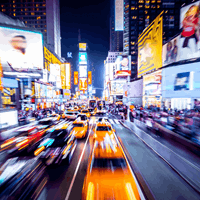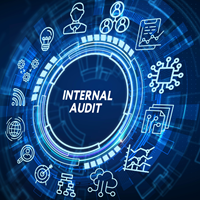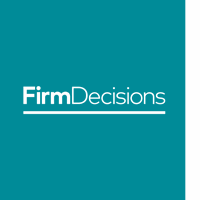Confidence increasing among global advertisers on programmatic
The U.S. Association of National Advertisers (ANA) held its annual Financial Management Conference at the end of May in San Diego. Fiona Foy, MD North America at FirmDecisions, reports back on the event.
The ANA’s Financial Management Conference is an annual bellwether of the global advertising market. The 2017 event, held at the end of last month in San Diego, California, was no exception. It drew together all the different component parts of the advertising ecosystem, including senior figures representing: advertisers from Jaguar LandRover to Intel, Charles Schwab to HP; all the major media agencies and agency groups; ad tech and martech vendors; and, representative trade bodies, including the ANA and the 4As. The conference featured delegates from advertisers with a wide variety of different responsibilities, including finance, of course, but also media, marketing and procurement.
The universe of different organizations and roles represented in San Diego holds up a mirror to the increasing complexity of modern marketing, particularly around digital and programmatic trading. From the presentations made from the stage, the questions advertisers were asking from the floor, and the conversations we had during the event, it’s clear that advertisers are making important strides in seizing the opportunities offered by both programmatic and digital. The global advertiser community – across many different job functions – is gaining confidence about the new realities of the ecosystem.
That said, knowledge, experience, and capabilities client-side are clearly unevenly spread. The dizzying rate of change, and the complexity of the ecosystem, makes it hard for some – particularly those not “digital first” – to keep pace. Many need guidance to ensure that their investment in digital, bought programmatically, is right for them and delivers against business and marketing objectives. What’s more, we see that there is general consensus on the need for greater transparency. But on balance, the tone of the ANA event was optimistic and opportunistic, as constant innovation evolves to become the new normal.
Among the highlights of the event were:
The conference began with a wide-ranging discussion on transparency in agency production costs. The U.S. Department of Justice investigation launched in this area in late 2016 has led to increased client interest in transparency more generally. Among known issues about production costs discussed in San Diego were: duplication of resources from client teams to in-house studios; reconciliation processes; agency studio charging practices; and, transparency in supplier selection. The forthcoming report from the ANA on transparency of production costs is eagerly-awaited. Our advice at FirmDecisions on production is that advertisers should ensure agencies provide three, competitive production bids against every brief, and that, if an agency recommends using its own, in-house production facility, advertisers should consider using an independent production consultant to assess and verify production costs.
Andrew Altersohn, CEO of AD/FIN, unveiled a first-of-its-kind study on the economics of the U.S. programmatic advertising market, titled Seeing Through The Financial Fog. The report presents the results of a joint study between AD/FIN, the ANA, the Association of Canadian Advertisers, and Ebiquity. Programmatic media – defined in the report as “the automation of media buying and selling processes and decisions, enhanced through data” – is predicted to grow by 31 percent during 2017, faster than all other digital channels. Of the 28 advertisers who signed up to be part of the AD/FIN study, only seven could do so because the other advertisers had signed non-audit clauses with their agencies, which in essence meant that their agencies refused to give them access to the data. This in itself is a worrying find, as it goes to show how important it is for advertisers to update their contracts to ensure they get the transparency they require. That said, the study still assessed nearly 4,500 campaigns generating 6BN impressions. More details on the report here.
This year, IBM introduced the concept of Blockchain to the marketing procurement community. Babs Rangaiah presented a layman’s explanation of Blockchain, as it's still such a new concept. Touted as the best solution for advertisers to secure transparency, it assumes all parties in the supply chain want and will benefit from the ability to see into the entire ecosystem. The opportunity a protocol like this affords is undeniable, but whether all parties in the supply chain will be willing to open up their systems and allow complete visibility into their processes, performance, and finances is yet to be resolved.
The VP & Global Creative Director of Intel, Teresa Herd, talked about the experiences of Agency Inside, the company’s in-house agency. She shared what’s worked well for them to date, including an annual reduction of $10M in fees, $3M in production costs, and more than halving the agency roster from 250 to “just” 110, worldwide. Teresa made the case for the in-house model – from the point of view of efficiency and effectiveness, as well as transparency and accountability – while acknowledging the value of working with key agency partners when and where required.
Bot fraud: Michael Tiffany, CEO of WhiteOps, presented a new study of bot fraud, covering 15BN impressions generated for 49 different advertisers at a total cost of $6.5BN. The study identified bot fraud loss in the sample running to $3.3BN, just over half the total investment. Sourced traffic was found to have generated more than three times as much fraud as non-sourced traffic, with mobile internet video being the most likely environment for bot fraud. Tiffany detailed significant progress being made in tackling bot fraud, however, and ended with the rallying cry, “The war on fraud is winnable!”
ANA President & CEO, Bob Liodice, highlighted the challenges advertisers face in terms of getting what they pay for when they buy media programmatically. Because of all the data, technology, consultancy, agency, and research fees that are levied, he said a maximum of just 40 cents in every dollar gets through to publishers. Liodice showed that, if the wastage between advertisers and publishers could be halved and 70 cents in every dollar got through, an additional $18BN worth of budgets would be freed up to purchase media inventory in the U.S. marketplace.
Delegates left the four days in San Diego upbeat, full of advice – albeit not all of it aligned – and an ever-expanding to-do list on how to get the most out of programmatic. Several brands shared their experiences of “getting under the hood” of the ecosystem, and the quantifiable benefits this brings. But no-one went away underestimating the scale of the task that advertisers face if they are truly to thrive in this environment. There’s light at the end of the tunnel. It’s just that it’s a very long tunnel indeed.



